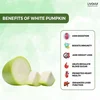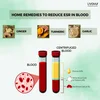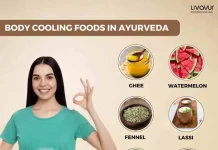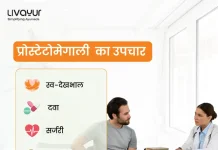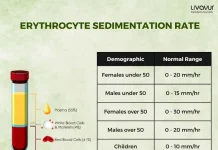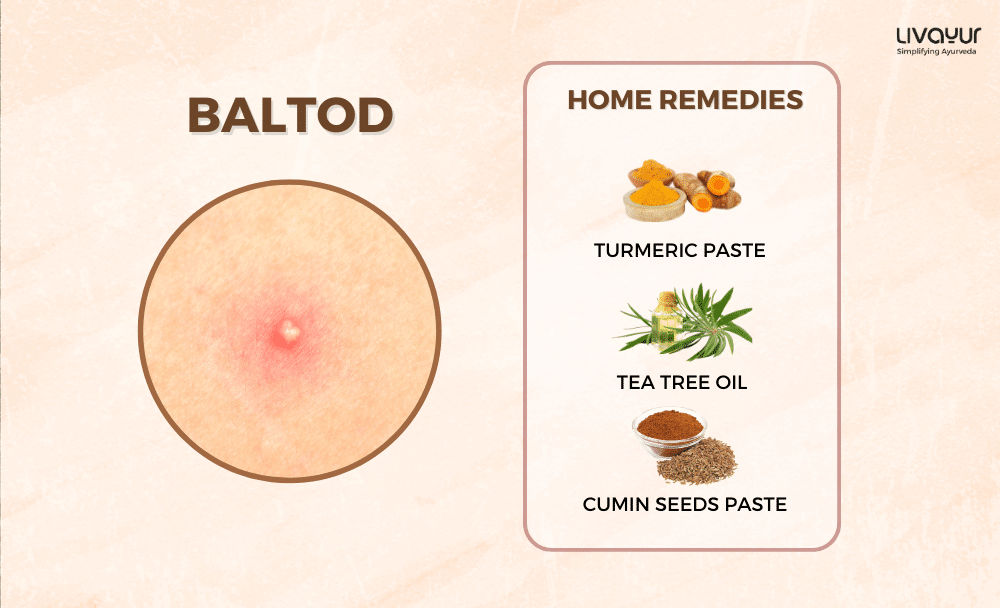
Have you seen those large-sized, pus-filled, tender bumps on the skin? Those are nothing but boils or baltod (बालतोड़).
We all must have experienced the painful boil at some point of time in our lives. Boil, also known as Baltod in English, is a common skin condition that manifests as a massive yellow pimple that can cause immense discomfort and pain.
These localized infections usually develop when infection occurs at the hair follicle and the surrounding tissue. Such inflammations are often called “deep folliculitis” or “perifolliculitis.”
A boil on the skin can result in painful, pus-filled bumps beneath the skin’s surface. While some of these boils sometimes go away without medical intervention, a baltod (बालतोड़) may often require baltod medicine and proper baltod (boil) treatment to relieve
the pain and prevent complications. [1] Sometimes, if left untreated, a baltod (बालतोड़) may become complicated and lead to severe skin infections such as cellulitis or lymphadenitis, which shows constitutional symptoms such as fever, fatigue, and chills. [1]
Understanding the possible causes, recognizing the various symptoms, and knowing the available treatment options for boils are essential for effective management and relief.
In the present article, we will study and explore the triggers and causes behind the development of boil on the skin, identify the common symptoms of baltod (बालतोड़), and discuss the various baltod in English treatment approaches to alleviate the discomfort associated with this condition.
What are the causes of baltod (बालतोड़)?
The primary cause of baltod (बालतोड़) is bacteria, although there are several other reasons behind this condition.
1. Bacterial infection
The primary cause of boils is a bacterial infection, commonly Staphylococcus aureus. These bacteria can enter the skin through cuts, scrapes, or hair follicles.
2. Weakened immune system
Individuals with weakened immunity are more prone to developing boils. It is common among people with medical conditions such as chronic infections, diabetes, or even cancer. They can also be seen in individuals suffering from eczema, conjunctivitis, or allergies such as allergic asthma.
Want to strengthen your immunity? Explore these ayurvedic herbs that will you build immunity
3. Poor hygiene
Poor hygiene practices can increase the risk of developing boils, as bacteria can easily enter the skin and cause an infection. Pseudomonas aeruginosa and the contamination of undertreated water in saunas or whirlpools cause these.
4. Blockages on the skin
This may be caused due to exposure to topical products that block the hair follicle’s opening, leading to inflammation.
What are the symptoms of baltod (बालतोड़)?
A boil on the skin can appear as red, swollen, and painful bumps that range in size and may seem as big as a cherry stone or even a walnut. Here are a few of the main symptoms of baltod (बालतोड़):
- Red, painful bump: A boil on the skin typically starts as a red, tender lump on the skin.
- Stony bump: The boil or baltod (बालतोड़) comes with a stony cherry-like bump or walnut-sized bump that’s quite hard and crusty.
- Pus-filled center: The bump may develop a white or yellow center filled with pus over time.
4. Swelling: The affected area may become swollen and feel tender to the touch.
5. Increased pain: As the boil grows, it can become increasingly painful and sometimes causes a fever that makes the person feel weak and tired.
6. Cluster of boils (carbuncle): When too many boils form a cluster, it is called Carbuncle. Formation of Carbuncle can lead to fever, weakness, and fatigue. The Ayurvedic term for carbuncle is Pidaka.
In case you develop a fever, you can check out these effective home remedies for fever
7. Swollen Lymph nodes: Swelling of lymph nodes may be one of the symptoms of baltod (बालतोड़) or boils.
Did you know?
Cluster-boils or carbuncles are not to be taken lightly. Delaying treatment may lead to fatal complications, such as sepsis and difficult-to-treat infections that spread to other parts of the body.
Where Does Boil Appear?
The most common areas where boils appear are listed below.
- Face
- Eyelids (Boils on eyelids are called sty)
- Armpits
- Buttocks
- Groin
- Neck
- Thigh
- Back
- Posterior [13]
Did you know?
Boils tend to grow in areas that are prone to friction or where heat is trapped. All the above-listed areas of your body are prone to friction or overheating.
How are boils different from pimples and cysts?
Boils Vs Pimples
| Boils or Baltods (बालतोड़) | Pimples |
| Boils are larger in size, extremely painful, and filled with pus. | When hair follicles get blocked, you get pimples. |
| Pimples are localized and are much smaller in size. | By maintaining proper hygiene, one can avoid getting boils. |
| Boils are created through warm compress, antibiotics, and surgical drainage. | Pimples are treated through OTC retinol or benzoyl peroxide. |
| By maintaining proper hygiene one can avoid getting boils. | Pimples are caused due to hormonal imbalance and genetical reasons. Therefore, avoiding pimples is not always possible. |
Boils Vs Cyst
| Boils | Cysts |
| Boils are caused due to infected hair follicles and surrounding tissues | Growth of skin cells lead to the formation of cysts. Cysts cannot reach the skin surface and remain blocked just underneath the skin. |
| Fast-growing, swollen lump on the skin | Slow-growing, round lump on the skin |
| White-coloured pus-filled lump | Yellow-coloured, foul-smelling pus-filled lump |
| Sore and painful lump | Swollen and painless |
| Possible fever or fatigue | Without fatigue or fever |
How to Prevent Boils (बालतोड़)?
Patients should be educated on preventing carbuncles through various measures, including:
- Hygiene: Emphasizing good personal hygiene practices.
- Weight Management: Encouraging weight loss to reduce the risk.
- Diabetes Control: Promoting proper diabetic control.
- Nutrition: Advising on a balanced and healthy diet.
- Managing Underlying Conditions: Ensuring adequate treatment of any underlying diseases or immunodeficiency.
- Decolonization of staphylococci in the nasal passages: This can be achieved by applying mupirocin twice daily for a period of 12 to 30 days. [13]
How to prevent boils from coming back
Proper hygiene habits can prevent boils from coming back. Cleaning your skin regularly with an antibacterial soap or mild cleanser is important. If you have wounds or cuts on your skin, make sure to clean the wounds or cuts with medicated cleansing lotions. This will prevent the bacteria from entering the skin and causing an infection. Avoid sharing your personal belongings like washcloths, towels, razors, etc.
How can a baltod (बालतोड़) be treated?
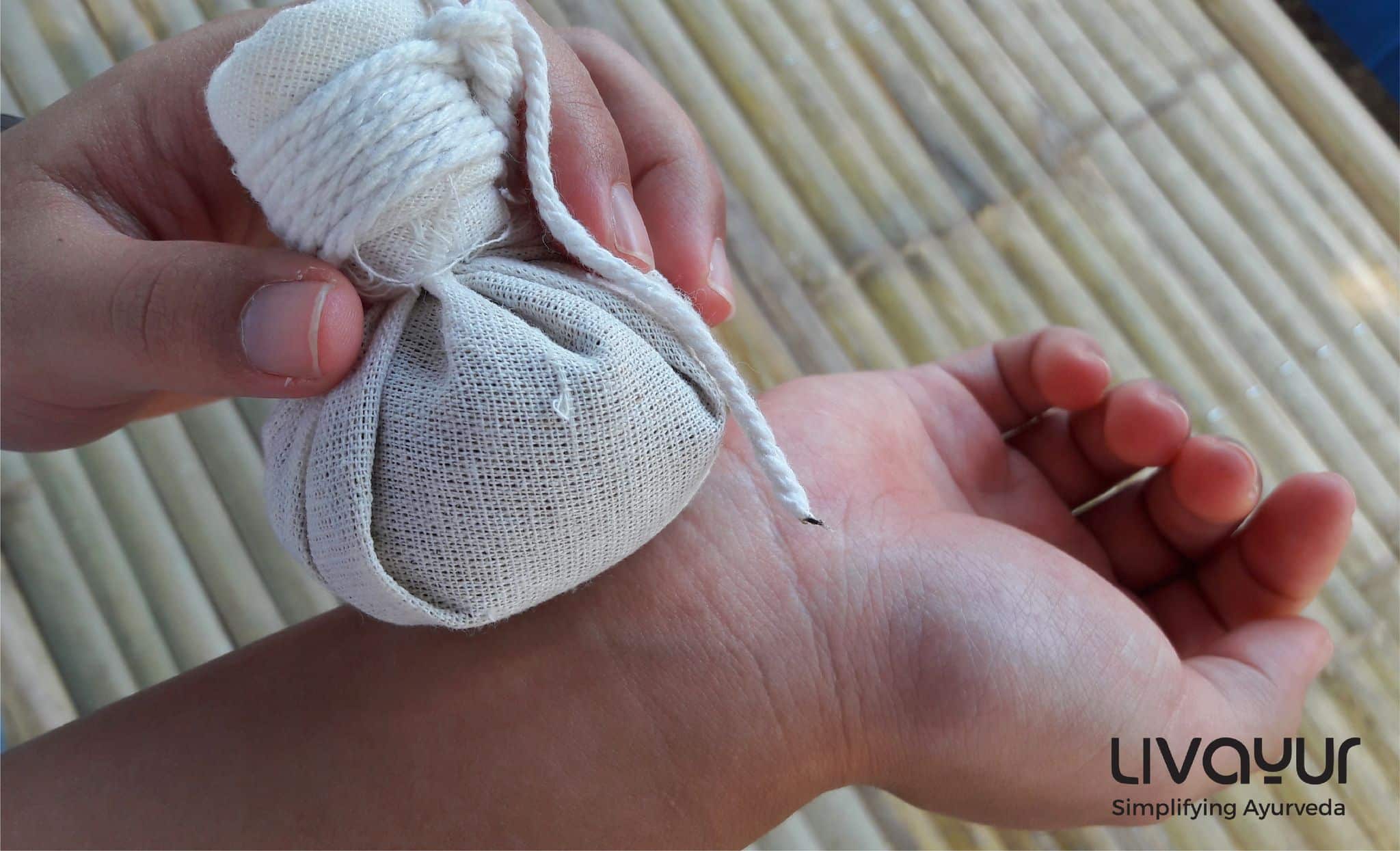
1. Warm compress
Applying a warm and moist compress to the affected body part several times a day can help bring the boil to a head and promote drainage. [3]
2. Cutting and draining the pus
As a baltod (boil) treatment, a doctor may drain the pus-filled abscess with a small cut and then disinfect the wound. They may place sterile gauze strips inside to soak up and remove any remaining pus. During the healing time, the wound is left open. [3]
3. Avoid squeezing or popping
Do not attempt to squeeze or pop the boil on the skin, as this can lead to further infection or spread of bacteria. [1]
4. Antibiotics
Seek advice from a licensed medical professional when determining if antibiotics are necessary as a treatment for a severe or recurrent infection, such as in the case of a “baltod (बालतोड़).” [1]
Certain Boil Care Quick Tips
- Always wash your hands and sanitize them before touching a boil and after touching a boil.
- The washcloth you use for applying the warm compress on the boil must be clean and soft.
- Once the pus drains out from the boil, make sure to cover it with a sterile bandage.
- Once the boil begins to drain, use an antibacterial soap to clean the area. This will remove germs from that area and reduce the chances of an infection.
When to seek medical help?
1. Pus-filled abscess
Medical assistance and baltod medicine are usually necessary when dealing with boils. Doctors generally treat boils by making a small incision to drain the pus-filled abscess, disinfecting the wound, and placing sterile gauze strips inside to absorb any remaining pus.
The wound is left open for healing and is not sutured shut. Self-squeezing of boils, especially on the face, is bly discouraged.
2. Growing boil
If a boil is still growing or the abscess has not fully formed, a doctor can assess its progress.
During this phase, you can try to facilitate the healing process by using a warm, moist cloth or a specialized ointment that draws out pus, often referred to as “drawing salve.”
3. Development of carbuncle
Antibiotics are only required if complications are likely or have already occurred, such as the development of a carbuncle or baltod in English when multiple boils merge. In such cases, hospitalization may be necessary for intravenous antibiotics. It is crucial to open carbuncles to allow pus drainage, followed by meticulous wound cleansing with an antiseptic solution. [12]
At what stage of the boil should you go to a medical practitioner?
If the boil becomes intolerably painful, doesn’t drain out easily, if several other boils develop in the same area, and if you start suffering from fever and chills, you must contact the medical practitioner without delay.
FAQs
1. Is there a baltod (बालतोड़) home remedy available?
Yes, a baltod (बालतोड़) home remedy is available. Ayurveda, the holistic healing science, advises one to treat ‘Vidhradhis’ (baltod/boils) through powerful natural home remedies. You can alleviate itching and inflammation with the help of these home remedies for Baltod (Boils) Treatment:
• Apply cold compresses multiple times daily to reduce discomfort.
• Consider using over-the-counter antihistamines to minimize itching.
• Apply topical creams and ointments to the affected skin for relief from itching and discomfort. [4]
Some other ingredients you can apply at home to take care of boils include:
Tea Tree Oil
Tea tree oil possesses potent antibacterial and antiseptic properties, making it effective in treating bacterial infections responsible for boils. You can dilute a few drops of tea tree oil with a teaspoon of coconut or olive oil, apply this diluted mixture to a cotton swab, and gently treat the boil two or three times daily. [5]
Turmeric
Turmeric powder, containing curcumin with antibacterial and anti-inflammatory properties, can expedite the healing of a boil. You can use turmeric either internally or topically. You can create a paste of turmeric with water and apply it to the boil. [6]
Castor Oil
Castor oil comprises ricinoleic acid, a natural yet robust anti-inflammatory compound. This, along with its possible antibacterial properties, renders castor oil an effective natural Baltod (Boils) Treatment. [7]
Neem Oil
Neem oil is believed to possess antiseptic, antibacterial, and antimicrobial qualities, has the ability to inhibit the growth of various harmful bacteria, and is beneficial in addressing skin infections, including Baltod (Boils) Treatment. [8]
Raw Onion
When used topically, raw onion offers advantages for skin health and boils due to its antimicrobial properties. It also helps with a variety of skin diseases and allergies when its paste is applied externally on skin allergy. [9]
Betel Leaf
Slightly warm a Betel leaf until it turns tender. Apply Castor Oil on the leaf and place the oil-coated leaf on the Baltod (बालतोड़) or boil. This home remedy may rupture the boil and drain it out.
Garlic
Fresh garlic possesses antimicrobial properties that contribute to the Baltod (Boils) Treatment and infection prevention. Studies also suggest that it aids in addressing various skin conditions, including wound healing and combating viral or fungal infections. [10]
Ginger
Certain specific compounds found in ginger have antimicrobial and anti-inflammatory properties aiding in the management of bacteria and other skin pathogens as well as Baltod (Boils) Treatment. [11]
Epsom Salt
Epsom Salt, also known as magnesium sulphate can be an effective home remedy to treat the inflammation associated with boils. You need to mix Epsom Salt with water to make a paste. Apply the paste to the boil. This helps to dry out the pus easily. [14]
The above-mentioned home remedies are common home remedies for boils or Baltods. (बालतोड़)
But, depending upon the location of the boil, there are some specific home remedies as well.
For Boils or Baltods (बालतोड़) on the groin:
1. Use sitz baths for pain relief
2. Wear clean, breathable underwear
3. Keep your private area clean
For Boils or Baltods (बालतोड़) on the eyelids
1. Do not wear any makeup
2. Massage the affected area gently to induce drainage of pus.
For Boils or Baltods (बालतोड़) on the gums
The application of toothpaste helps
For Boils or Baltods (बालतोड़) on the armpits
The skin on the armpits is prone to friction, which generates heat. Applying a cooling ingredient like Aloe Vera gel on that area relieves pain and inflammation associated with the armpit boil.
Also, it would be best to never press or prick a boil on the skin as this may spread the infection to other skin parts.
2. How can you prevent a boil from occurring?
Maintain good hygiene and keep the area clean by washing it gently with antibacterial soap and warm water. It would help you if you avoided close contact with someone with a staph infection or carbuncle, washed your hands frequently, bathed daily with soap, and did not share or reuse washcloths, towels, and sheets.
3. What are the complications that can occur due to baltod (बालतोड़)?
Sometimes, boils on the skin never go away entirely and recur in the same place, which may become complicated. It may enter the bloodstream and cause the body to have a severe septic reaction. It may also move to other body parts, such as the brain, and cause life-threatening problems such as meningitis.
Conclusion
Baltod in English, also known as boils, can be an uncomfortable and bothersome skin infection caused by bacterial invasion. Timely and appropriate baltod medicine, along with preventive measures, can help manage and reduce the occurrence of boil on the skin. Ayurvedic cosmetics have gained immense popularity in the past few decades, and a wide range of medicinal plants have worked in enhancing the complexion, treating acne, dark patches, as well as boils and carbuncles. Herbs such as Chandana, Punnaga, Padmaka, Useer, Madhuka, Manjistha, Sariva, Paysya, Sita, and Lata have been known to work as drugs. This article has explored the various causes, symptoms, and baltod treatment options.
Disclaimer
This article is written from a health and wellness perspective and is not medical advice. Kindly seek the help of a certified medical practitioner before initiating any treatment.
References
- Boils and carbuncles: Overview
- Interventions for bacterial folliculitis and boils (furuncles and carbuncles)
- Boils and carbuncles: How are boils treated?
- REVIEW OF SKIN INFECTIONS (TWAK ROGAS) AND ITS NATURAL SOLUTIONS
- Tea tree oil in wound healing: A Review on Herbal essential oil
- Turmeric: A Herbal and Traditional Medicine
- Medicinal effect of Castor Oil Plant
- Effect of neem oil on some pathogenic bacteria
- Traditional and modern uses of onion bulb (Allium cepa L.): A systematic review
- A COMPREHENSIVE SURVEY OF GARLIC FUNCTIONALITY
- Ginger: A functional herb
- Boils and carbuncles: Overview
- Carbuncle
- Magnesium Sulphate Paste: Recipe and Uses
